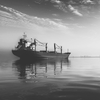The U.S. Coast Guard regulations regarding salvage and marine firefighting (SMFF) as elements of vessel response plans (VRPs) for tank vessels have been in place since December 31, 2008. On September 30, 2013, these regulations were expanded to include non-tank vessels with a capacity of 2,500 barrels or greater of fuel oil.
The VRP requirement was established by the Oil Pollution Act of 1990 (OPA 90). The statute provides, in pertinent part, that the VRP shall:
- be consistent with the National Contingency Plan and the Area Contingency Plans;
- identify the qualified individual having full authority to implement the plan;
- identify and ensure by contract or other approved means the availability of private personnel and equipment necessary to respond to the maximum extent practicable a worse case discharge (including a discharge resulting from fire or explosion);
- describe the training, equipment testing, periodic unannounced drills, and response actions of persons on the vessel;
- be updated periodically; and
- be resubmitted for approval of each significant change.
The salvage and marine firefighting requirement was addressed in a vague provision in the original VRP interim rule issued in 1993 requiring only that the oil spill response plan identify a salvage company with expertise and equipment and a company with vessel firefighting capability that agree to be so listed as available resources. The interim rulemaking assumed a then current shortage of sufficient SMFF assets nationwide and included a provision encouraging the response industry to enhance such resources to meet the anticipated need. That vague provision was replaced by the 2008 rulemaking.
A major point to be noted in this rulemaking is that it establishes planning criteria, not performance standards. The rule specifically states that it is based on assumptions that may not exist during an actual incident, while requiring that a primary response provider is obligated to respond when called. Compliance with the regulations is based upon whether a covered response plan ensures that adequate resources are available, not on whether the actual performance of those response resources after an incident meets specified arrival times or other planning criteria. Failure to meet specified criteria during an actual salvage or marine firefighting response does not necessarily mean that the planning requirements of the statute or regulations were not met. The Coast Guard will exercise its enforcement discretion in light of all facts and circumstances. This policy is not new. It was first articulated (in fewer words) in the 1993 interim rule.
The specific salvage and marine firefighting regulations apply only to those tank vessels that carry Group I-IV oils and are required by 33 CFR § 155.1015 to have a VRP and to non-tank vessels carrying Group I-IV oil with a capacity of 2,500 barrels or greater. Thus, exempted from this planning requirement are:
- tank vessels that carry Group V oils;
- tank vessels that carry animal fats and vegetable oils as a primary cargo;
- tank vessels carrying other non-petroleum oils as a primary cargo; and
- non-tank vessels with a capacity of less than 2,500 barrels as a fuel (bunkers).
The salvage and marine firefighting regulation has adopted a methodology for determining the adequacy of identified resources that differs from that utilized in the other portions of the VRP regulations. The usual method relates to what are referred to as oil spill removal organizations (OSROs). If the VRP utilizes an OSRO that has been classified by the Coast Guard as capable of responding to that particular type of oil spill in that Captain of the Port (COTP) zone, then the vessel owner/operator is not required to verify or document the adequacy of the OSRO. If a response resource that is not a classified OSRO is utilized, then the vessel owner/operator has the burden of showing the adequacy of the identified responder.
The salvage and marine firefighting regulation, on the other hand, includes a list of 15 selection criteria that must be utilized by the vessel owner/operator in selecting a salvage resource provider and a list of four selection criteria that must be utilized in selecting a marine firefighting resource provider. These include, but are not limited to, whether the resource provider is currently working in the response service needed; whether it has a documented history of participation in successful salvage and/or marine firefighting; whether it owns or has contracts for the needed equipment; and whether it has personnel with documented training certification and degree experience. The owner or operator must certify that all 15 selection criteria and all relevant factors were considered when the resource provider was chosen. The owner or operator should ensure that, if the Coast Guard or an aggrieved third party takes action against it for an inadequate SMFF response, it is in a position to hold the response contractor liable.
The rulemaking adopts a varying incident response timeframe, depending on the particular salvage or marine firefighting service involved. The majority of the services must be capable of responding within 18 or 24 hours, but some response times vary from one (1) hour for remote salvage assessment and consultation to 84 hours for subsurface product removal operations in offshore areas. The timeframe for on-site salvage assessment is six hours in continental US waters, as it is for on-site fire assessment.
A significant term in the statutory and regulatory VRP requirements is that the availability of response resources, including SMFF resources, be ‘ensured by contract or other approved means’. Questions have been raised as to whether the availability of salvage and marine fighting companies and their subcontractors meet that requirement, as many of the contracts are effectively letters of intent with broad contingency clauses. In its preamble to the SMFF regulations, the Coast Guard noted that the rulemaking requires a contract, an enforceable written agreement that expressly provides that a resource provider is capable of and committed to meeting the VRP requirements. The Coast Guard recognizes that the response resources created by the VRP requirements may be put to other uses when not utilized in a SMFF response. However, the owner of those resources must be under a contractual arrangement to ensure these services and that equipment are available to respond in the required timeframes.
The U.S. Coast Guard is in the process of developing a verification program to test the SMFF response system. The verification concept was first floated in March 2016. In November, the Coast Guard announced that the program would start in December. While some details remain in flux, it appears that the Coast Guard will utilize a variant of its current Government Initiated Unannounced Exercise (GIUE) program. This would involve notifying an incoming vessel that it is to activate (as a drill) its tank vessel or non-tank vessel response plan for a given scenario that concerns elements of salvage and/or marine firefighting. During this drill, no equipment or personnel need be actually deployed, but the equipment and personnel that would have been utilized if this were a real situation must be identified and their capability to deploy must be fully documented. A full report on the simulated response effort must then be submitted to the Coast Guard for evaluation. A gradual roll-out of the verification program seems to have been delayed until January 2017. Plans call for the eventual testing of all four identified SMFF response resource providers in all 41 USCG Captain of the Port (COTP) zones.
Hopefully, this verification program will constitute a robust audit of all essential elements, including capabilities and resources and will find that the salvage and marine firefighting companies are able to fully meet the timeframes provided for in the regulations. If shortcomings are identified, adjustments will be instituted as necessary.
The salvage and marine firefighting regulations are a vital part of the U.S. commitment to minimizing the impact of oil spills into the waters of the United States. There can be no argument to the statement that the best way to protect the environment is to ensure that the pollutant never escapes in the first place. Further, in the event of a casualty that impacts a navigable waterway of the United States, it is a proven fact that time saved in the response equates to dollars saved in damages. With a strong U.S. salvage and marine firefighting presence, the United States will be in a position to properly protect the maritime environment. A program to verify that the salvage and marine firefighting industry can meet its obligations will be a major step in the right direction.
The Author














